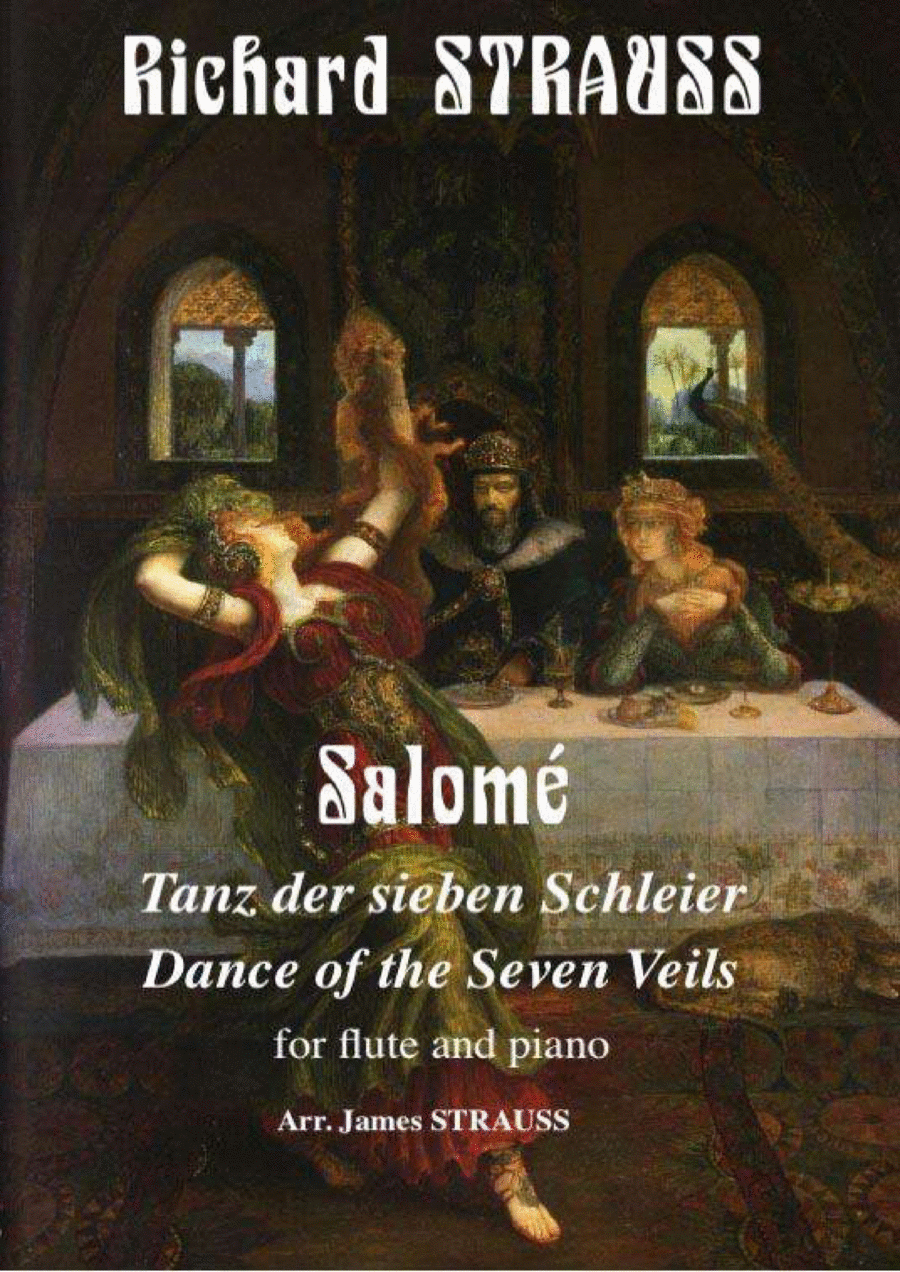Flute,Piano - Level 5 - Digital Download SKU: A0.1287662 By James Strauss. By Richard Strauss. Arranged by James Strauss. 20th Century,Chamber,Contemporary,Jewish,Sacred. Score and part. 31 pages. James Strauss #878687. Published by James Strauss (A0.1287662). Strauss and the Dance of the Seven VeilsThe Dance of the Seven Veils is a performance by Salome before King Herod Antipas, depicted in modern stage productions, literature, and visual arts. This dance is an elaboration of the New Testament story of the Feast of Herod and the execution of John the Baptist. While the New Testament does not give the dance a name, the title Dance of the Seven Veils originated from the 1893 English translation of Oscar Wilde's French play, Salome, which included the stage direction Salome dances the dance of the seven veils. Richard Strauss also incorporated the dance into his opera Salome in 1905.The concept of Salome's dance involving seven veils can be traced back to Wilde's play, where he was influenced by earlier French writers who portrayed Salome as a symbol of female lust. Wilde envisioned the dance as an act of unveiling, symbolizing the revealing of Salome's true self. He drew inspiration from Gustave Flaubert's story Herodias, in which Salome performs a hand dance to please Antipas. Wilde initially intended to follow Flaubert's version but later changed his approach.The idea of the dance being associated with veils can be linked to the popularity of veil dances during that time, which were westernized interpretations of Middle Eastern dance styles. Notably, the dancer Loïe Fuller was known for her veil dances. Wilde's play did not provide a detailed description of the dance, but it is commonly assumed to involve a series of veils being removed, symbolizing the process of unveiling oneself.Strauss's operatic adaptation of Salome also includes the Dance of the Seven Veils. Although the dance remains unnamed in the music, Salome's sexual fascination with John the Baptist seems to motivate her request, while Herod appears pleased. The visual interpretation of this scene can vary depending on the production, with some emphasizing its eroticism. Strauss specified that the dance should be thoroughly decent, as if it were being done on a prayer mat, but some performances have portrayed it in a more explicit manner.James Strauss's choice to program well-known orchestral pieces for the flute and piano stems from the technical challenges they present, both instrumentally and interpretatively. It allows the flautist to explore different timbres and a romantic style of playing, inspired by Orchestral mass sustained phrases and intense vibrato found in this repertoire. Transcribing orchestral pieces for the flute presents certain difficulties, such as playing loudly and with a full tone in the lower register or producing high notes that gradually fade away. Despite these challenges, the purpose is to challenge the flute's traditional role and explore its expressive capabilities through this repertoire.
